Branding for Disruptive Startups
This post is a slightly more refined version of a talk I gave during 2019, called Branding for Disruptive Startups. It's a collection of stuff that's in my head on a daily basis around what makes a good brand, the intersection of brand and culture, and what you can do as a startup to start creating a brilliant brand without investing a heap of cash. I also cover why branding is harder for startups, disruptive startups in particular. - Hayden
Before we start, "disruptive startups" is a term we use at Jellypepper to group our clients working in deep tech or just generally cool industries - like Baraja (self-driving car tech), Corellium (mobile device virtualization) or Inventia (3D bioprinting).
What is Branding?
The description we tend to use at Jellypepper is that your brand is what your customers think you are. It's everything — how you act, how you present yourself, how you're perceived. It's is shaped through their experiences and interaction with your products, services and communications and you influence those thoughts with the messages you communicate, the way you behave and, today more than ever, the experience you deliver. When a brand is consistent, it becomes believable, resulting in engagement, loyalty and success.
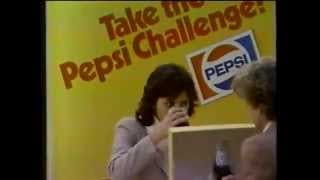
Back in 1975, Pepsi started a well known campaign called the Pepsi Challenge, essentially a Pepsi vs Coke blind test where they got a bunch of people to drink both drinks then tell them which one they preferred. Guess what the result was?
Around 61% preferred Pepsi. So Pepsi's better right? They have a statistically-proven better product.
Unfortunately for them, Coke outsold them at least 2:1, 3:1, 4:1, depending on the market. So what did this challenge prove? Was it that Pepsi's marketing team sucked, or the results were false?
No, it proved that even though they had a statistically better product, there were a lot of factors that just weren't as good, including their brand.
Coca Cola ran a really successful campaign around 2009 / 2010 called Open Happiness. Ads like these are part of the reason they're dominating the market. Frankly, it's just sugar water. But they don't sell sugar water — they sell lifestyle and happiness.
While Pepsi was busy telling people that they could have a better drink, Coke was telling people they could have a better life.
What makes an effective brand?
When most people think of a brand, they think of the logo. Fair enough since it's the most visually identifiable mark for a company. I'm positive if I showed you the logo, you'd be able to tell me the company right away.
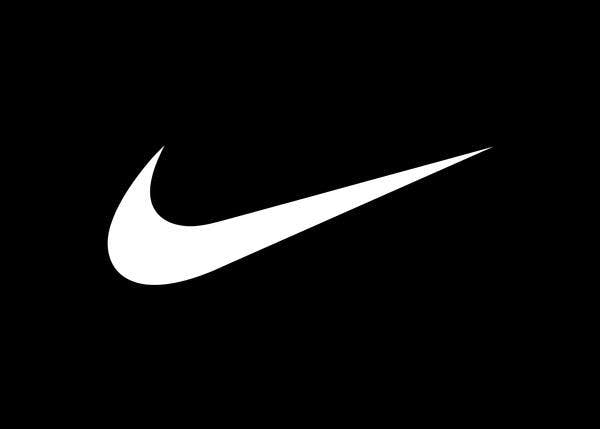
But what else is a brand made of? What about colour? Can you tell what company I'm mimicing right now?
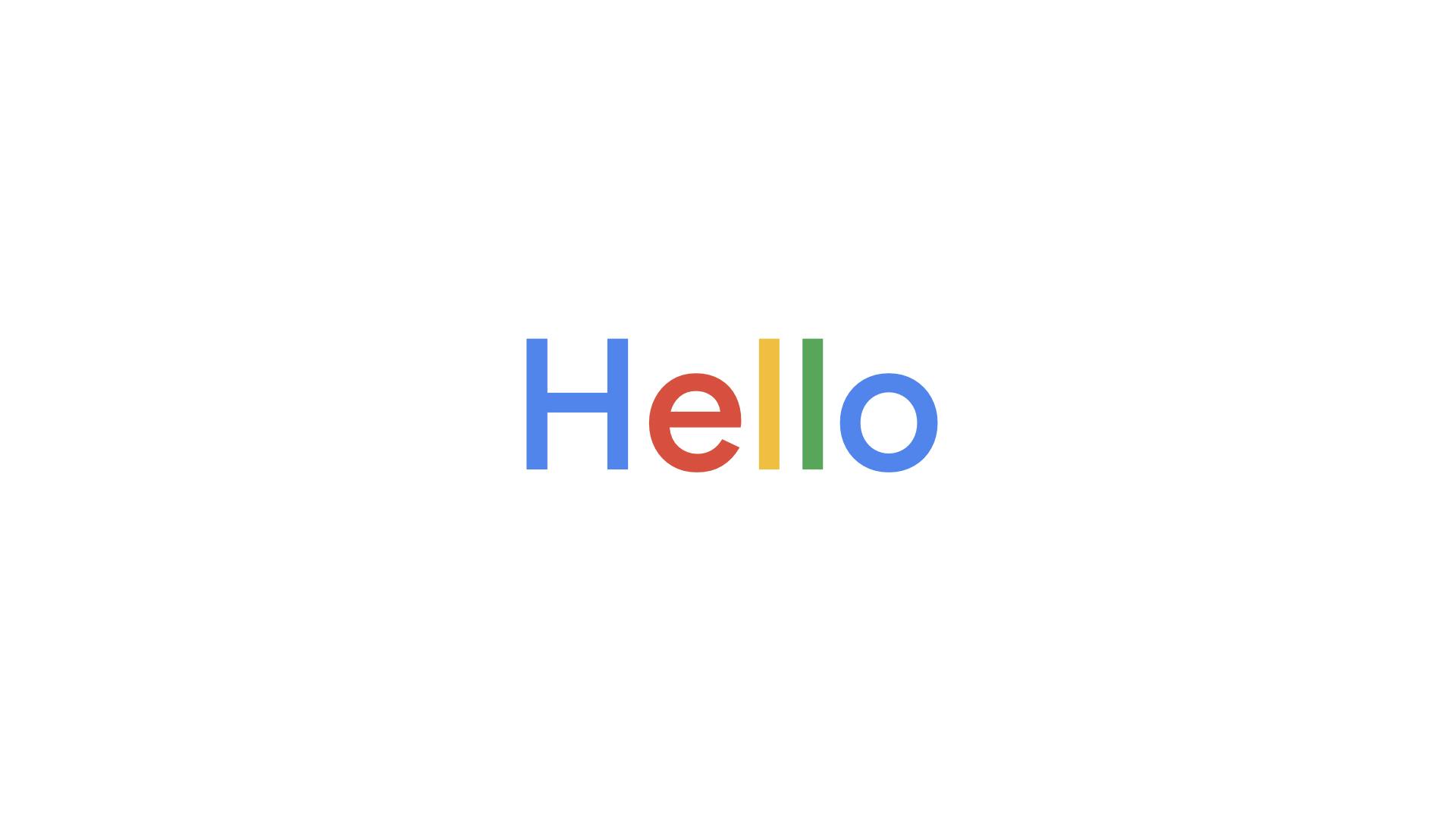
Hundreds of companies use these colours, but it's these specific hex values that make it unique.
It's also the order in which they're shown. Are you able to tell between these two words which one is correctly Google?
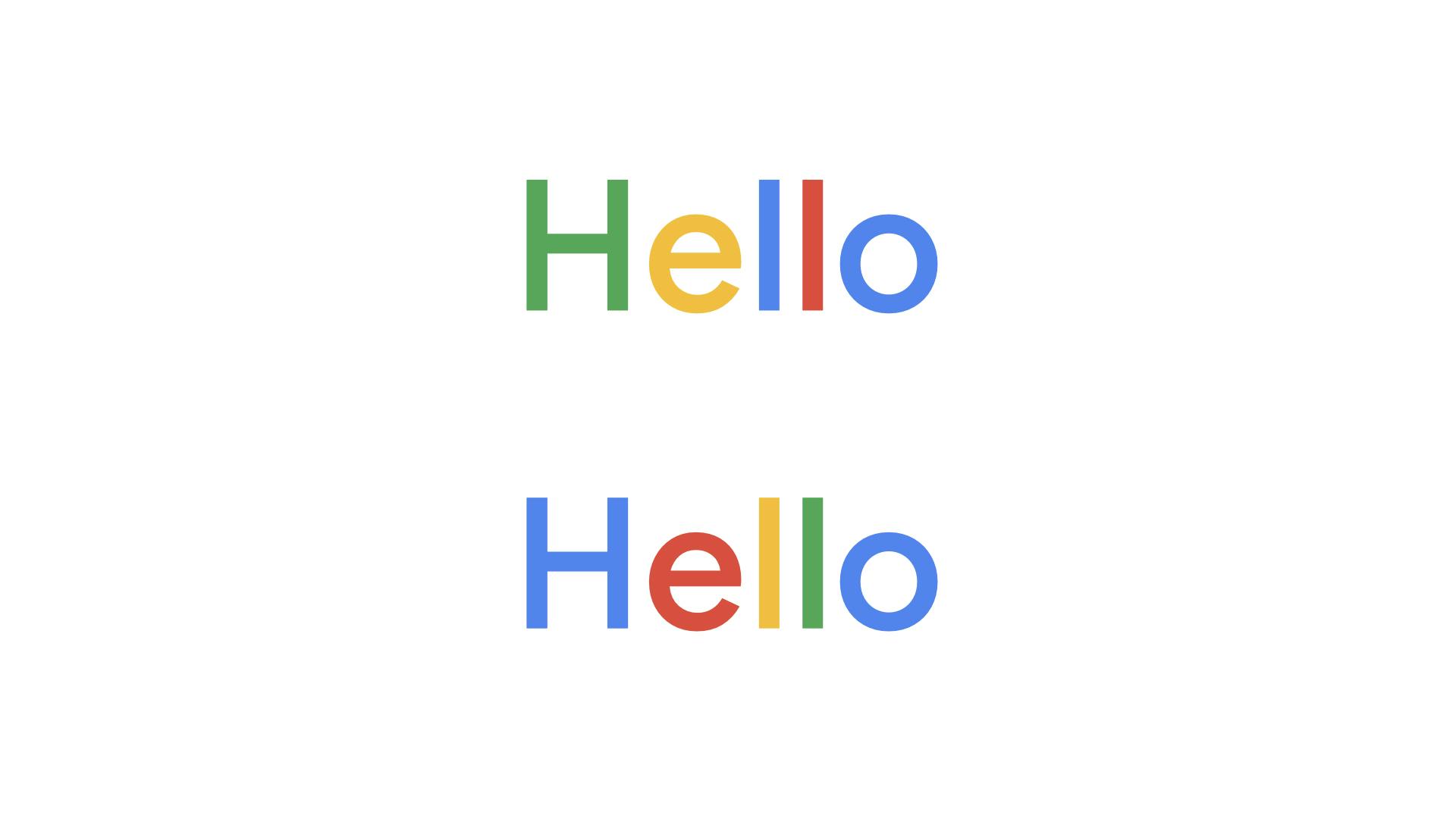
If you picked the bottom one, you're a perceptive cookie. You've seen this order so many times in their logo that you can recognise when it's wrong. That's pretty amazing if you think about it.
How about tone of voice? Here's two descriptions of laptops, one of them was written by Apple. Can you tell which?
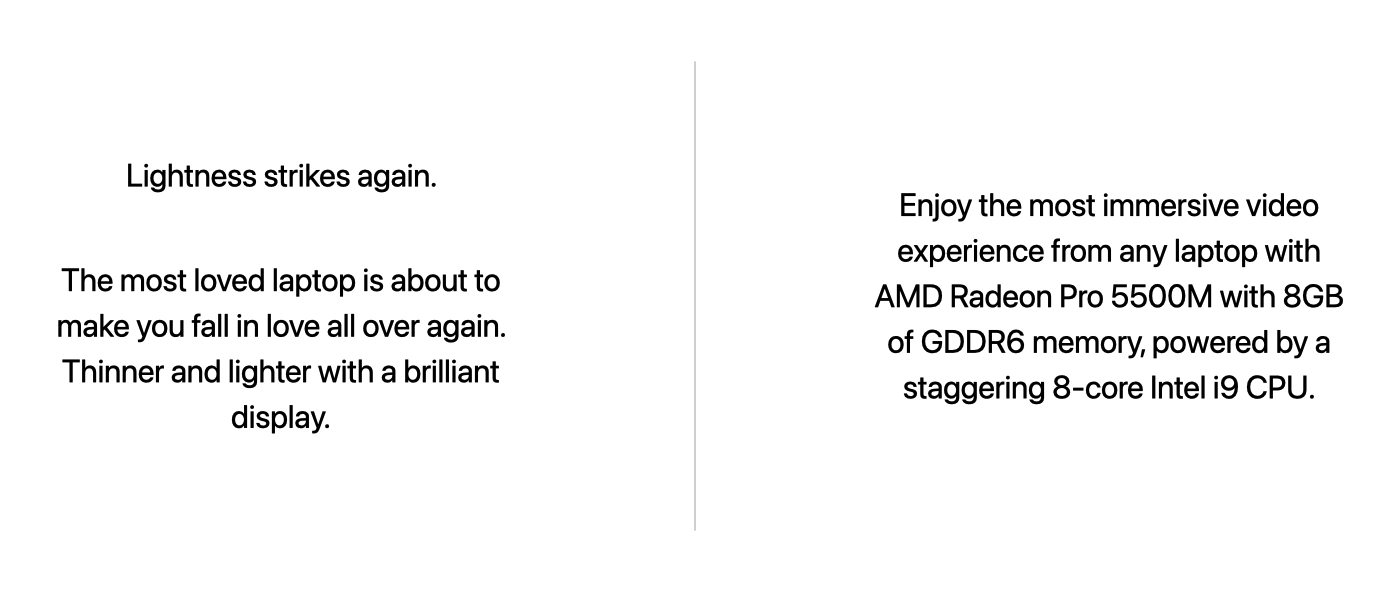
If you picked the left one, well done. How did you know? I didn't even note what the product is. I didn't have a logo and they both used the same font and colours.
Fun Fact: they're both the same laptop - a Macbook Pro.
What is branding actually made of?
Branding is comprised of a lot of different things - layouts, imagery, typography, colours, logos, tone of voice, messaging, iconography and patterns. All these things add up and you can recognise a great brand from any one of these. Although, these are mostly visual things - they're just a gateway, method of delivering your brand.
Real branding is about creating a relationship and being approachable. You want your customer to identify with your story and the problems you're solving, create that relationship based on values you both share.
Most brand relationships are an illusion, but to be fair if you cant tell the difference between illusion and reality which most people can't, then it doesn't matter anyway. They're invested in you, that's what matters.
But of course, that relationship is much easier if you're not faking it.
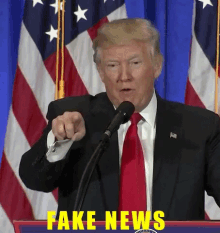
Brands are about stories. I love stories - they're how we understand and make sense of the world around us. The stories you tell can inspire people, educate them, give them hope. This can make them love you, loyal to you. Think about any book or movie that's stuck with you your entire life, given you direction or changed how you think.
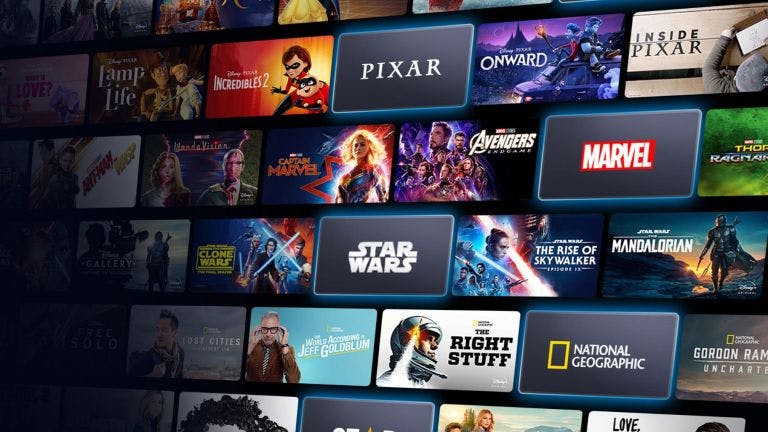
Branding is also about culture - they're two sides of the same coin. The only way your brand is persistently represented throughout your company and beyond is by instilling your company's values into your team. That's what will make them your best advocates.
I tend to find the best brands are authentic, honest and simple. 202X is going to a very interesting time - it's an era of post-truth, politically endorsed fake news and deepfake videos. Being authentic and having your audience believe you is going to mean more than ever. How you decide to adopt to this new trend is going to say a lot about your brand.
Disruptive Startups
A lot of what we do at Jellypepper is branding disruptive startups. Branding can be particularly difficult for these startups as the the lack of precedence and sources of inspiration means there's nothing to draw off. How do you brand a self-driving car company or a 3D bioprinting company? What's the right tone to go for? What should it look like? What can we say, or not say?
The flip side of that is whatever you make might just dictate the industry standard and influence whether people reject or adopt the new technology. There are 100 wrong ways to brand a 3D bioprinting company for example, by talking too deep about the technology to regular people (which weirds them out) or designing your website too casual or edgy so customers think you're flippant.
It's always changing, but there are 3 core issues we generally have to face when branding or rebranding these companies:
The Knowledge Gap
The first one is the knowledge gap, where nobody understands what you do. At least when you're rebranding a bank, a food delivery or a chat app, people get the core concept which means you can focus on what makes you different. With startups, especially the disruptive ones, your difficulty tends to lie in explaining your core concept or product.
Relationships
The second one is relationships. First impressions really matter here - people don't know anything about you and it can be hard for them to grasp what you're about, sp you have to use whatever's at your disposal. Without press or testimonials, this can be tough. That's where your story, culture and mission come in, to encourage that personal attachment.
Fresh content
The third is content. Most scrappy startups can get away with using stock photography and reworking their competitors copy. It's much harder if you're working in a totally new field - there's not much stock footage available on 3D bioprinting. So when you're on a tight budget, a little photoshop compositing goes a long way.
The Strategy
So, how can you create a great brand? One of my favourite quotes here is that "it's not inspiration, it's perspiration". It's like anything - it gets better over time the more effort you put into it. You can structure your approach to branding by creating a Brand Strategy which is what we do for our clients at Jellypepper. So what the hell is a Brand Strategy?
Well, it's essentially the principles and direction behind your brand. It's all the emotional and psychological traits of your company - what people think of you, what you think of yourself... that sort of thing and using that as a rationale for your visuals. Culture, perception, vision, mission... how do these influence the fonts that we pick, the words we use, the shape of our logo?
There are a bunch of tools we have at our disposal to help with this, here's a couple:
Elevator Pitch
One simple and effective tool is the elevator pitch. Most good startups have one, less so in big companies. They're a quickfire way of bringing together your team's messaging and company's positioning so it's great for folks to understand what the hell you do.
Here are 4 good elevator pitch examples from very big tech companies - they're short and sweet. Any idea who they belong to?
- We help businesses and organisations communicate with a simple chat interface.
- We help individuals get from A to Z with a simple ride-sharing app.
- We help people buy and sell things online.
- We help individuals stay connected and share experiences online.
If you said Slack, Uber, Amazon and Facebook, you'd be a winner. Easy right? They're factual, relatively straight to the point and help people understand what you do. Interestingly, they all follow the same pattern: here's what we do, here's how we do it. Unfortunately, these aren't good for developing a long-term brand strategy because they focus on the what and the how... but not the why.
The Golden Circle
There's a great TED Talk by Simon Sinek that explains that all companies know what they do, only some companies know how they do it and very few know why. The best campaigns and all the best brands start with why — they're emotive.
Most companies work inwards because it's easy: here's what we do, here's why we're different.
- we're a law firm -> biggest clients, great performance
- we sell this car -> leather seats, aircon
- we sell Pepsi -> 61% of people prefer us to coke
Factual, but uninspiring. Companies who are brilliant at branding and advertising, such as Apple, start with the why.
- “everything we do is about challenging the status quo”
- “think different”
- “those who are crazy enough to think they can change the world are the ones that do”
How do we do it? We invest in simplicity, empathy and beauty. These folks sell laptops and phones remember, but if you couple that mindset with a great logo and a well-directed campaign: inspiring. People don't buy what you do, they buy why you do it. Let's see an example of this in action:

Apple's 1984 Superbowl Ad, comparing the “big brother” concept from George Orwell's novel Nineteen Eighty-Four to their main competitor, IBM.
Fun fact: Apple's market research company said this was probably going to be one of their worst ads ever (rating it 5/43). The Ad cost $650k and ended up making them $155M. Why? The riveting story, strong modern cultural references and production values made it one of the most talked about topics in America.
The ROI of Branding
So why even bother with branding? Is it all just to make a sexy website and logo? It's really difficult for companies to see the ROI of branding and design because it's not as easily measurable like sales or code, but we tend to think there's 3 key reasons to invest in a brand:
Navigation
The first is navigation. Every popular industry is an oligopoly:
- Footwear: Nike, Adidas, Puma?
- Food: McDonalds, KFC, Subway?
- Soft Drinks: Pepsi, Coca Cola, Dr Pepper?
How do you decide where to go? Part of it is what you feel like, but the majority is brand loyalty.
Reassurance
The second is reassurance. Once a customer opts to go with you, you want to make them feel like they've made the right choice. This is where delightful moments and great experiences come into play. If you choose a brand and they disappoint you with a bad product or customer service, you're unlikely to go with them again.
Engagement
The last one is engagement. Once a brand has you, they need to do everything they can to keep you. They use their brand strategy and visual devices to keep that relationship open with you - the same tone of voice, messaging, the logo, the same great experience.
Branding for Startups
The most common thing I hear from startups is that they can't afford a good brand right now and that's a fair enough statement — if you're pre Series-A, you're probably concerned with staying alive. The difficulty with branding startups for us (and disruptive startups in particular) is there's a minimum vector where we're best suited to help them. Anything before seed, it's just not financially viable unless you cheap out, but then what's the point?
So where do you start if you want an amazing brand without dropping a bunch of cash on an agency? The first step is workshopping - figure out what sort of company you want to be and how you want people to perceive you. These things define your brand just as much as a logo. Turn this into a brand strategy. You don't need an agency for this (though it does help). Figure out your values, mission, culture, market positioning, things like that. Focus on creating a good strategy - it will make the visual part a lot easier later on.
Hopefully you've got some idea of branding for startups now. We run workshops like this every so often at Jellypepper with our clients. It's the foundation of every great branding project we do.
So you know... I'll send you an invoice.